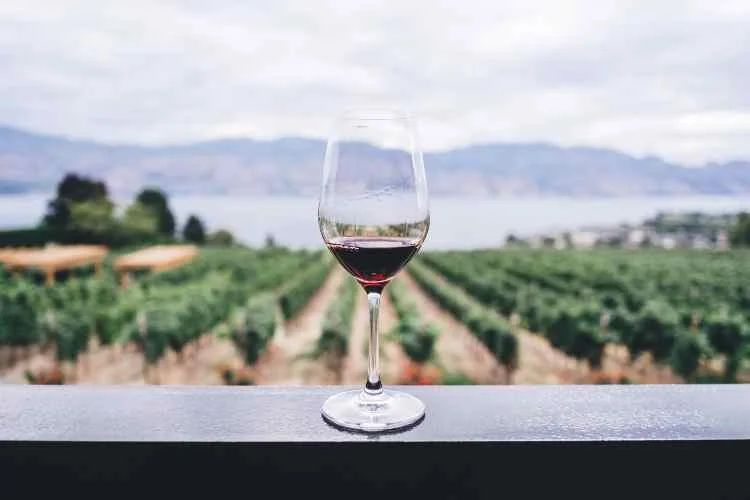Burgundy Facts. That’s what you have come here to know, of course! Well, just wanted to tell you that this is going to be your last read on the same as it consists of all the facts that you may or may not want to know about Burgundy.
So, to give you a short context, Burgundy used to be a region in France. It included the central areas of Côte-d’Or, Saône-et-Loire, Nièvre, and Yonne. In 2016, it merged with another region called Franche-Comté. Together, they formed a new region called Bourgogne-Franche-Comté.
Burgundy Facts: Geographical Context
Have a look on the most interesting burgundy geography facts:
The Scenery of Burgundy
- Burgundy’s terrain is a mixture of uplands and plateaus. River valleys that provide a significant watershed cross these.
- While the Saône flows to the Rhône and eventually the Mediterranean, the Loire and Seine rivers run northward to the Atlantic Ocean.
Changes in Population
- People leaving the Paris metropolitan region have led to growth in the northern départements of Yonne and Côte-d’Or, despite the general fall in population.
Diversity in Agriculture
- The Charolais breed of beef cattle is particularly well-known for being raised in the western region of Saône-et-Loire.
- There is dairy farming in Burgundy’s east.
- Yonne and the northern part of Côte-d’Or are two places where large-scale grain cultivation is carried out.
Burgundy Wine Facts
- The prime burgundy wine region facts is that the wine-producing region of Burgundy is found on the lower slopes of the Côte-d’Or.
- The most well-known Burgundy wines, such as Clos-Vougeot, Pommard, Gevrey-Chambertin, and Nuits-Saint-Georges, are produced from these vineyards which in itself are great burgundy wine nutrition facts.
- Fine wines are also produced in the Yonne Valley, particularly at Chablis, which lies east of Auxerre.
Diverse Industries
- Historically, the metal industry has played a significant role, especially in the Saône-et-Loire département.
- Food processing, chemicals, pharmaceuticals, and electrical and electronic equipment are some of the other sectors.
Historical Importance
- Other Burgundy Facts include numerous historic sites that may be found in Burgundy, including the châteaux of Ancy-le-Franc, Tanlay, Fleurigny, and Saint-Fargeau; the cathedrals at Auxerre and Sens; and the Romanesque basilica at Vézelay.
- A Romanesque church at Paray-le-Monial, a pilgrimage site, is fashioned after the renowned monastery of Cluny.
Transportation
- High-speed rail (train à grande vitesse; TGV) connects Dijon, Mâcon, and Le Creusot.
- The Saône River is navigable from Chalon-sur-Saône southward to its confluence with the Rhône River (for large-capacity boats).
- The département of Yonne’s northern region has seen a migration of inhabitants and enterprises from the Paris metropolitan area because of the region’s convenient access by train and road.
The Uplands of Burgundy
- Burgundy’s uplands consist of crystalline formations. The regions of Monan and Charolais contain these uplands.
Burgundy Facts: Historical Context
Following are the burgundy history facts:
The Beginning
- The initial home of Burgundians was an island named Bornholm in the Baltic Sea.
- In the first century CE, they relocated to the valley of the Vistula River, but they subsequently travelled westward to the Roman Empire.
First Kingdom
- By the early fifth century, they had built a strong kingdom while acting as Roman army auxiliary forces.
- This kingdom had its capital close to Lake Geneva and stretched as far as the Rhine River.
The Second Throne
- The Burgundians gained dominance over regions north and west of Savoy as well as the entire Rhône and Saône river basins when Rome’s influence waned. One important person who brought written rules to both the Burgundians and his Gallo-Roman people was King Gundobad (474–516).
The occupation of the Franks
- Burgundy Facts also include its independence which ended in 534 when the Franks invaded the region.
- Later, Burgundy was seized by Guntram, the son of Frankish king Clotar I.
The Carolingian Period
- Burgundy facts consist of the knowledge that it was divided multiple times by the Carolingians prior to Boso’s proclamation in 879 that he was king of all of Burgundy.
- Later, the German and French Carolingians reclaimed some of the nation from Boso.
The Provence Kingdom
Another burgundy fact is that up until around 933, Boso and his heirs were in charge of the kingdom of Provence, also known as Lower Burgundy.
The Arles Kingdom
- In 888, the German Welf family’s Rudolf I was crowned king of Jurane Burgundy.
- With the exception of the regions west of the Saône, his son Rudolf II expanded his domain to include the whole regnum Burgundiae.
- The kingdom of Arles was the name given to this combination of Upper and Lower Burgundy starting in the thirteenth century.
The Burgundian Duchy - The duchy burgundy fact is that west of the Saône River, the duchy of Burgundy was a component of the regnum Burgundiae.
- After being reclaimed from Boso by the French Carolingians, it continued to be a part of France.
FAQs
What is the Burgundy region?
A historically significant and former French region is Burgundy. The regions of Burgundy and Franche-Comté were combined in 2016 to create the new administrative region of Bourgogne-Franche-Comté.
What is the background of Burgundy wine?
The history of wine in Burgundy begins around 50 BC. It is believed that wine was made by the Celts before the Roman invasion of Burgundy.
Which categories does Burgundy wine fall under?
Rarely does the label of a bottle of Burgundy wine indicate the grape varietal. Rather, they presume that customers easily associate Beaujolais with Gamay, Chablis with Chardonnay, etc.
Also Read : – Thinei Reviews

